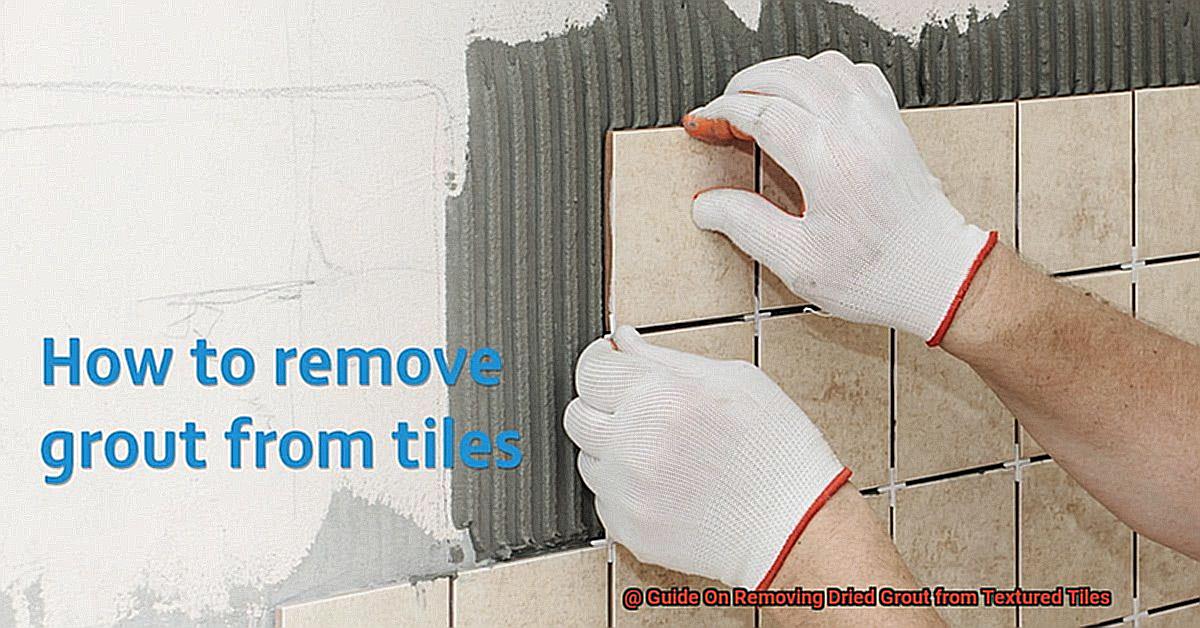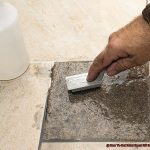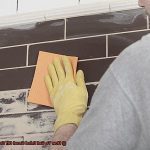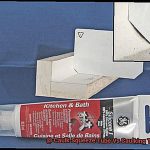Dealing with plumbing issues can be an absolute nightmare, especially when it comes to unclogging a drain.
It’s a problem that can arise due to various reasons, such as hair, grease, or other debris buildup over time. While using a drain snake is one of the most common ways to clear a clogged drain, what happens if snaking the drain makes it worse?
Imagine this scenario – You’ve just used a drain snake to clear your clogged drain, but instead of fixing the issue, you’ve made it worse. The water is now backing up and overflowing onto the floor instead of flowing down the drain.
This situation can be frustrating and stressful for any homeowner. Unfortunately, it’s not uncommon.
In this blog post, we’ll share some essential steps you can take to fix a drain that has been made worse after snaking. We’ll also provide tips on how to prevent this from happening again in the future.
With helpful tips, you’ll be well-equipped to handle any plumbing emergencies that come your way with ease and confidence.
Contents
What is Snaking a Drain?
It’s a plumbing technique that involves using a tool called a drain snake or auger to remove clogs and blockages from pipes.
Essentially, this process uses a long, flexible cable with a coil or hook at the end that can be inserted into the drain opening. As the cable is pushed further into the pipe, the coil or hook grabs onto the blockage and breaks it up, allowing water to flow freely once again.
While snaking a drain is a common DIY plumbing task, it’s essential to approach it cautiously to avoid causing more harm than good. If not done correctly, pushing the snake too far into the drain can damage the pipe or push the blockage further down, making it even harder to remove.
Additionally, using too much force or not holding the cable correctly can also cause damage to pipes. So, if you’re planning to snake your drain, proceed with caution and stop if you encounter resistance or feel like you’re causing damage.
If you’re unsure about how to properly snake a drain or if you’ve encountered a stubborn clog that cannot be removed with a drain snake, it’s best to seek professional plumbing assistance. In some cases, snaking a drain may worsen the situation instead of fixing it.
If this happens, try turning off the water supply to that particular drain to prevent additional water from flowing into the drain and causing more problems. Assess the severity of the issue and try using a plunger or pouring hot water down the drain if the clog is minor.
However, if you’re dealing with a more severe clog, contact a licensed plumber who can diagnose and fix the issue correctly.
What Causes a Clogged Drain?
Dealing with clogged drains is a frustrating and time-consuming task that nobody enjoys.
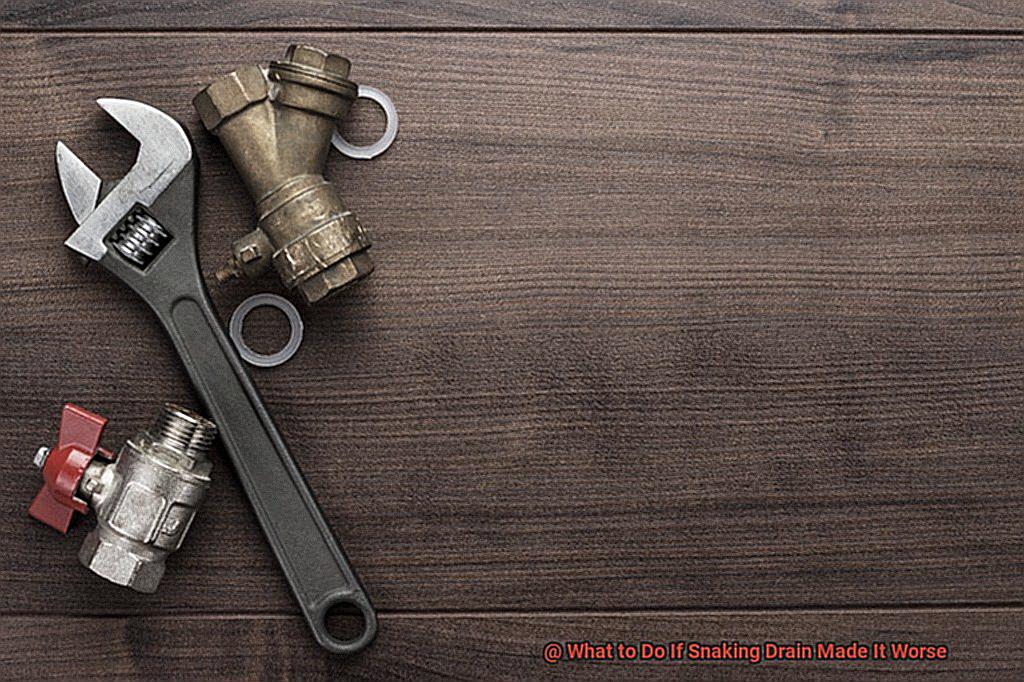
But what if we told you that you could prevent them from happening in the first place? By understanding the common causes of clogged drains, you can take proactive measures to ensure your pipes remain clear and free-flowing.
Here are some culprits that commonly cause clogs:
Hair
We all shed hair, and when it goes down the drain, it can accumulate over time and create a blockage. This is especially true in the bathroom where hair tends to go down the sink or shower drain.
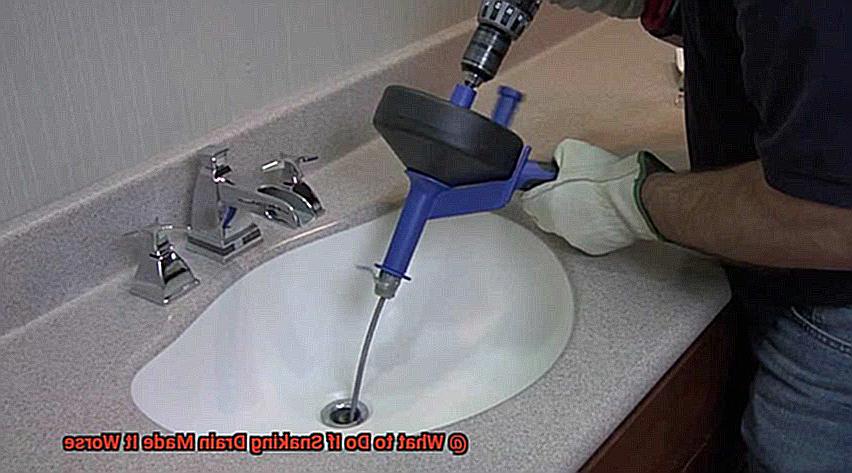
Luckily, using a simple drain cover can help catch loose hairs before they create a blockage. 2.
Soap and shampoo residue
Soap and shampoo do wonders in keeping us clean, but they can also leave behind a sticky residue that builds up over time. This residue can trap hair and other debris, leading to clogs in your pipes.
To prevent this, try switching to more natural, biodegradable products or reduce the amount of soap and shampoo you use. 3.
Food waste
The kitchen sink is another common location for clogs to occur. Food waste such as grease and oil from cooking can solidify and stick to the inside of pipes, causing blockages.
To prevent this, avoid pouring grease down the drain and properly dispose of food waste. 4.
Foreign objects
Sometimes things like toys or jewelry can accidentally find their way into drains and cause blockages. To prevent this, keep small items away from sinks and drains.
Tree roots
While less common than other causes on this list, tree roots can grow into pipes and cause significant blockages.
Preventative maintenance and regular inspections of your pipes can help detect any root intrusion early on.
How to Tell if Snaking the Drain Has Made Things Worse?
Snaking the drain is a common remedy for a clogged sink, but sometimes it can lead to bigger problems. How do you know if snaking has made things worse? Here are five signs to watch out for:
Foul Smell
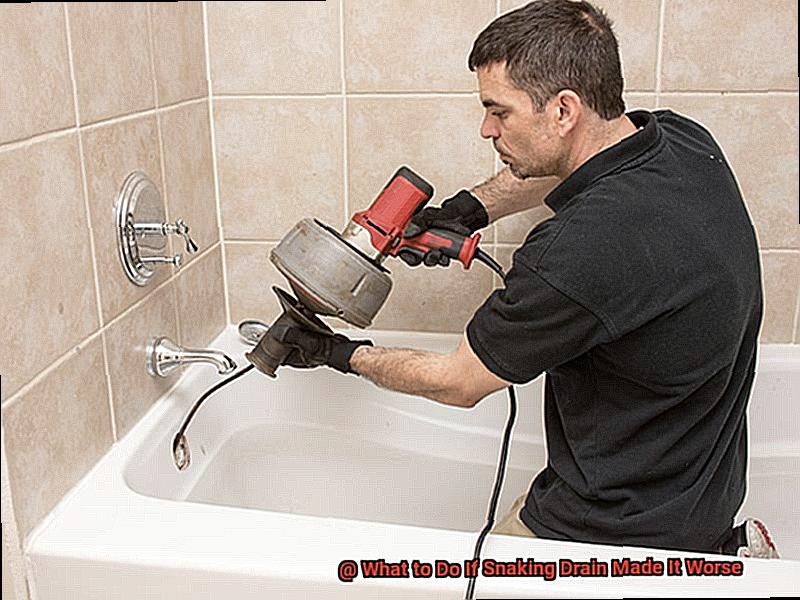
If you detect a foul odor coming from the drain, it could be a sign that snaking has damaged your sewer line. This smell may be unpleasant, but it’s important to address it quickly by calling a professional plumber.
Leaks
Leaks are another clear indication that snaking the drain has made things worse. If you notice water seeping from your pipes or under your sink, there’s a chance that snaking has caused damage to your plumbing system.
Clogged Drains
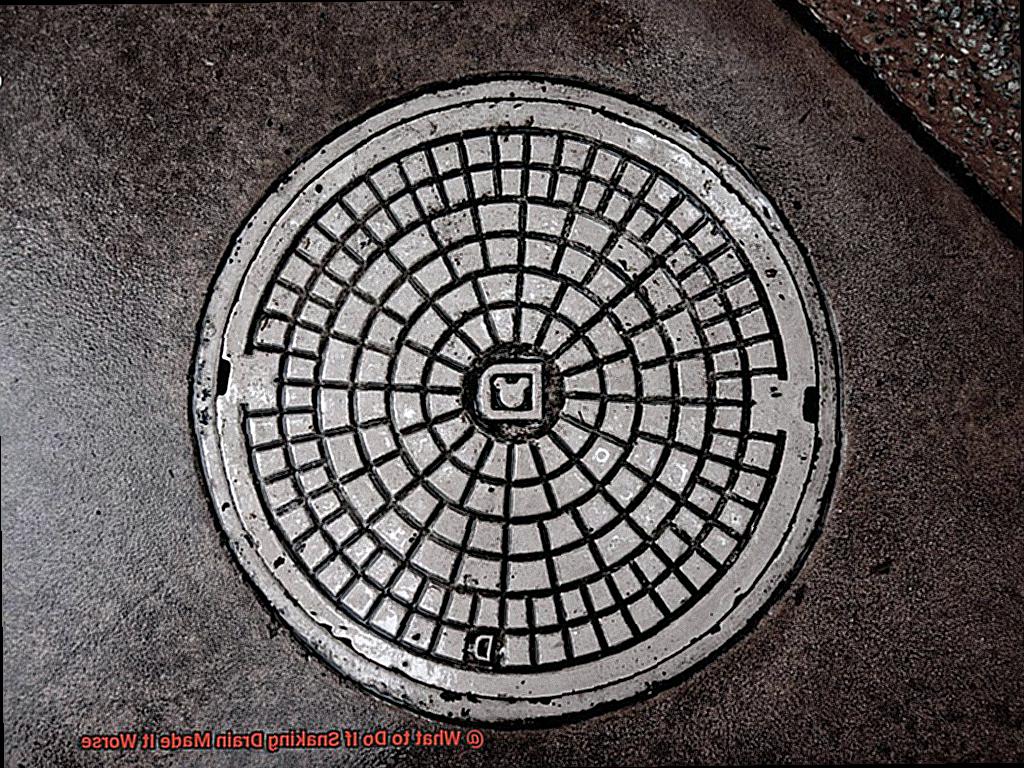
Snaking the drain can sometimes cause blockages further down the line. If you notice other drains in your home are also clogged or slow to drain, this may indicate that snaking has pushed the blockage further down the pipe.
Worsened Problem
If the problem has gotten worse after snaking, like if it won’t drain at all instead of just slowly draining before, then you might have caused a blockage further down the pipe. In this case, it’s essential to seek professional help as soon as possible.
Weird Smells
Strange smells coming from your toilet or sink after snaking could indicate a break in your sewer line or another blockage that needs attention.
If you notice any of these signs after snaking your drain, it’s important to call a professional plumber right away. Ignoring these issues can lead to more significant damage and costly repairs in the future.
Remember to turn off the water supply to the affected area and avoid using chemical drain cleaners as they can corrode pipes and cause damage to your plumbing system.
So, snaking the drain can be an effective method for clearing clogs, but it’s essential to know when it’s causing more harm than good. By keeping an eye out for these signs, you can catch any issues early and avoid costly repairs in the future.
Step by Step Guide on What to Do If Snaking Drain Made It Worse
We’ve all been there – you’re trying to unclog your drain with a snake, but things only seem to be getting worse. It can be a frustrating and worrisome situation, but don’t panic. There are steps you can take to fix the problem.
In this step-by-step guide, we’ll walk you through what to do if snaking a drain has made things worse.
Turn Off the Water Supply
Dealing with a clogged drain can be a nightmare, but when snaking the drain has made things worse, it’s time to take action.
The first thing you need to do is turn off the water supply. It’s like putting up a superhero shield to prevent any further damage or flooding.
Trust us, this is your first line of defense. Locating the water supply valve may seem daunting, but it’s usually located under the sink or toilet.
Once you’ve found it, turn the handle clockwise to turn off the water supply. This may seem like a small step, but it’s an essential one that can save you from further headaches.
After turning off the water supply, take a deep breath and assess the situation. Is there standing water?
Any debris that needs to be removed? If there is standing water, don’t panic.
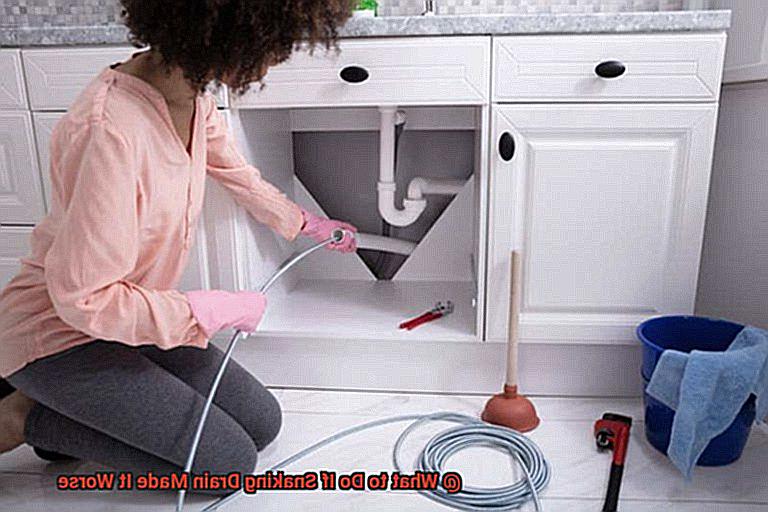
Use a wet/dry vacuum to remove it quickly and efficiently. Once you’ve removed any standing water, check for any damage caused by improper snaking.
The last thing you want to do is make things worse by trying to fix the problem yourself. If there is damage to your pipes, call in a professional plumber who can help identify and fix the problem correctly.
In summary, turning off the water supply is crucial when dealing with a snaking drain that has made the situation worse. It helps prevent further damage and flooding and allows you to assess the situation before taking any further steps.
Remember, if you think there might be damage to your pipes, it’s best to call in a professional plumber who can help fix the problem correctly.
Assess the Severity of the Issue
Dealing with a snaking drain that has been made worse can feel like you’re stuck in a never-ending nightmare.
The first step to solving this issue is to assess its severity.
Think of yourself as a detective on a mission to gather clues and solve the mystery of the clogged drain. To determine the severity of the issue, start by checking how well the water is draining.
Is it moving at a turtle’s pace or not moving at all? If it’s the former, then you may be able to fix the problem yourself using a plunger or drain auger.
However, if the water isn’t draining at all, it’s time to call in the professionals. A broken pipe or collapsed sewer line could be to blame, and trying to fix it yourself could make matters worse.
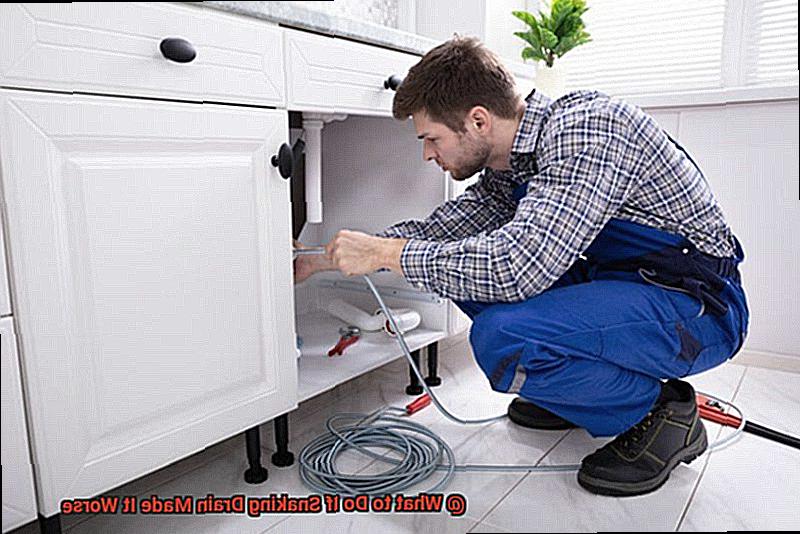
Another clue to look for is any unusual odors or sounds coming from the drain. A nasty smell could indicate an organic buildup while gurgling sounds could hint at a blockage in the pipe.
Paying attention to these clues will help you determine if it’s a minor issue that can be easily resolved or if it requires professional help. Assessing the severity of the problem is critical when dealing with a snaking drain that has been made worse.
It helps you avoid causing further damage and ensures that you find an effective and efficient solution. Don’t hesitate to reach out to the professionals if needed – they’ll swoop in like your very own plumbing superheroes.
And always remember to turn off the water supply before attempting any DIY methods.
Use a Plunger or Pour Hot Water Down the Drain
When it comes to dealing with a stubborn clog in your drain, snaking it may not always do the trick.
But fear not, my friend – there are other methods that can come to the rescue. Two of the most common methods are using a plunger or pouring hot water down the drain.
First, make sure there is no standing water in the sink or bathtub.
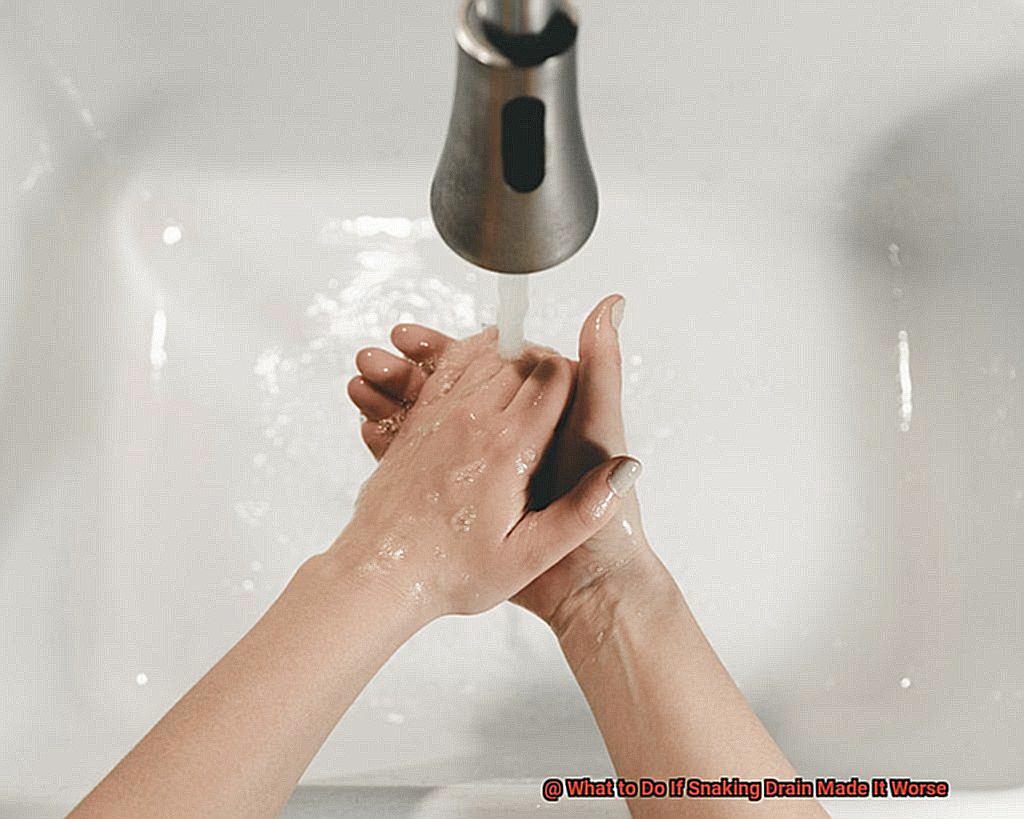
Next, place the plunger over the drain and make sure it forms a tight seal against the surface. Apply a slow and steady pressure as you push down, and then quickly pull up to create suction.
Repeat these motions several times until you see the water starting to drain. It’s important to note that if this method doesn’t work after several attempts, it’s time to try something else.
But don’t worry, we’ve got another trick up our sleeve – hot water. Boil a pot of water and carefully pour it down the drain in stages.
Give it a few seconds between each pour to allow the hot water to work its way through the pipes. Be careful not to burn yourself while handling boiling water – safety first.
It’s important to remember that these methods may not work for all types of clogs or if the blockage is too severe. When in doubt, it’s best to call in a professional plumber to assess and fix the problem.
But don’t let that discourage you from taking preventative measures. Using drain covers and avoiding putting certain materials down the drain can help prevent future clogs.
Contact a Licensed Plumber
Dealing with a stubborn clog can be a real headache.
You’ve tried snaking your drain, but the situation only seems to worsen. This is the perfect time to call in a licensed plumber who has the necessary skills, tools, and expertise to tackle even the toughest plumbing problems.
A professional plumber will start by conducting a thorough inspection of your plumbing system, using specialized cameras to identify any underlying issues such as corrosion or damage to your pipes. Once the issue is identified, they will recommend the best course of action.
Perhaps hydro jetting or replacing damaged pipes are required. Whatever the solution, you can trust that a licensed plumber has the experience and knowledge to get the job done quickly and effectively.
It’s important to resist the urge to attempt DIY repairs, which can often make things worse. In fact, you may end up causing costly damage to your plumbing system, making it far more expensive to fix than if you had simply contacted a licensed plumber in the first place.
Don’t let stubborn clogs get you down. Contact a licensed plumber who can diagnose and fix the issue promptly and efficiently.
Avoid Using Chemical Drain Cleaners
While it may seem like a quick fix, these products can actually cause more harm than good. Chemical drain cleaners contain harsh chemicals that can corrode and damage your pipes over time.
And if you’ve already tried snaking your drain, these products won’t be much help. So what’s a better solution?
Start by using a plunger to push the blockage through the pipes. Before plunging, cover any overflow openings to create a stronger seal and increase pressure.
If plunging doesn’t work, try using a plumbing snake or auger. These tools are designed to reach deeper into your pipes and break up stubborn clogs.
But be sure to follow the manufacturer’s instructions carefully to avoid causing further damage. Still stuck?
No worries. A professional plumber can diagnose and fix even the most stubborn clogs.
They’ll have the expertise and tools needed to get your pipes flowing freely again. Plus, they can offer advice on how to prevent future clogs from occurring.
Choose safer and more effective methods like plunging or snaking, or consider calling in a pro for more complex issues.
Avoid Snaking the Drain Yourself
Dealing with a clogged drain can be a hassle, but before you break out the snake, let’s talk about why it may not be the best idea.
While it may seem like a cost-effective solution, snaking the drain yourself can often lead to bigger problems. Without the proper experience or tools, you could end up causing damage to your pipes or pushing the blockage further down the line.
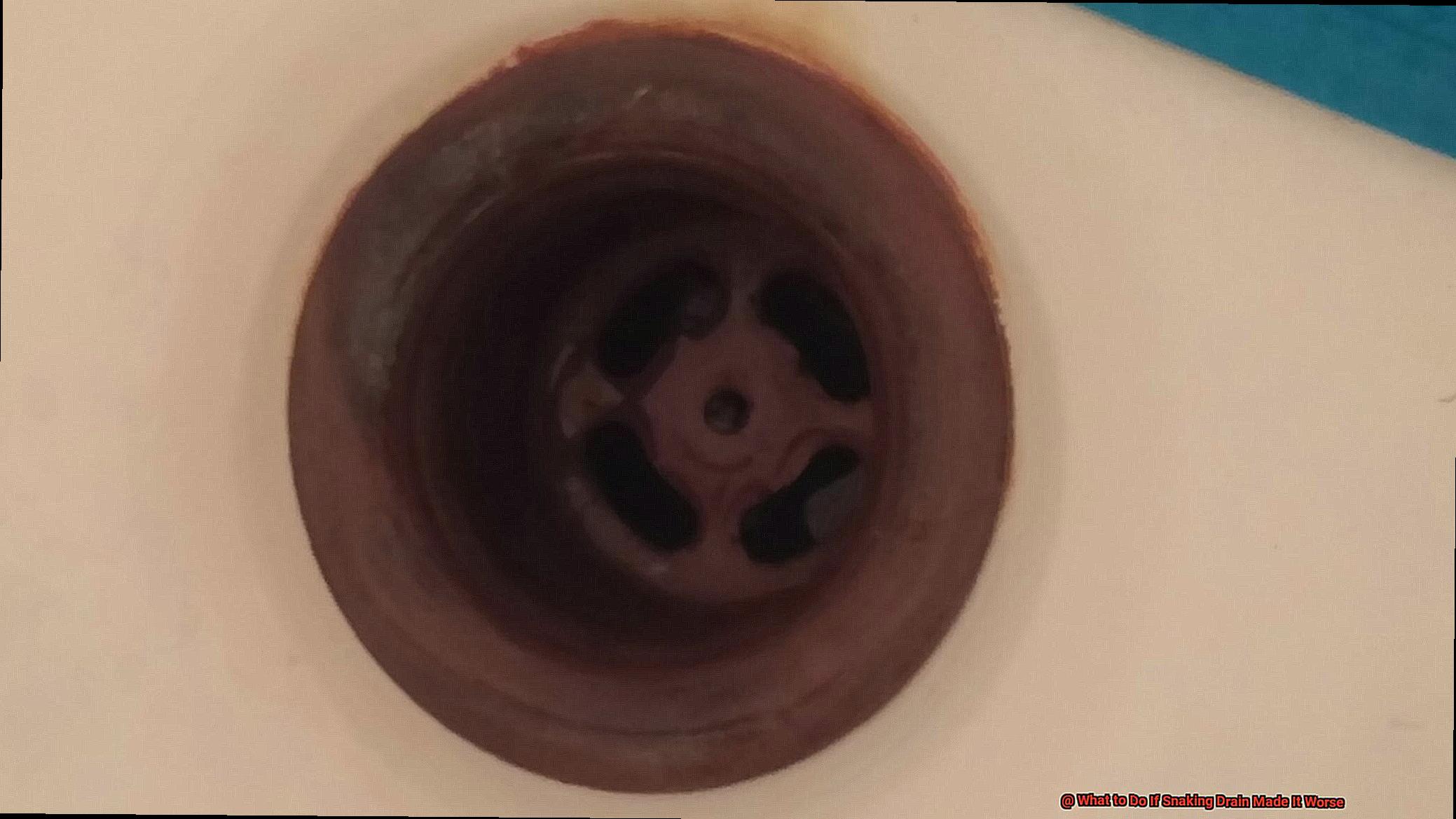
Think of it like this: would you perform surgery on yourself without any medical training? Of course not.
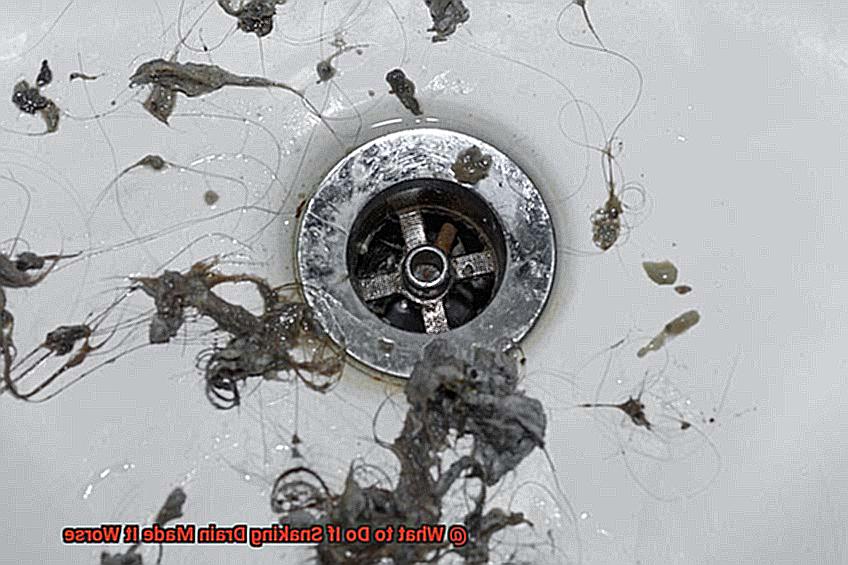
The same principle applies to snaking your drain. It’s always best to call a licensed plumber who has the expertise and equipment to properly diagnose and fix the issue.
A professional plumber may even use a sewer camera inspection to pinpoint the exact location and cause of the clog, providing a more effective solution. Plus, they can offer preventative maintenance tips to prevent future clogs.
From using drain covers or strainers to catching hair and debris before it goes down the drain, to scheduling regular cleanings to remove buildup before it becomes a major issue, a licensed plumber can help keep your drains running smoothly.
So, if you’ve attempted to snake your drain and the problem has only gotten worse, don’t panic, call a professional plumber right away.
P1LIlcZO94o” >
Conclusion
In conclusion, if you find that snaking your drain has made the problem worse, don’t panic.
There are a few things you can try before calling in a professional plumber. First, try using a plunger to dislodge any remaining blockages.
If that doesn’t work, you can try using an enzyme-based drain cleaner or a combination of baking soda and vinegar. It’s important to avoid harsh chemicals or tools that could cause further damage to your pipes.
And if all else fails, don’t hesitate to call in a licensed plumber for help.

